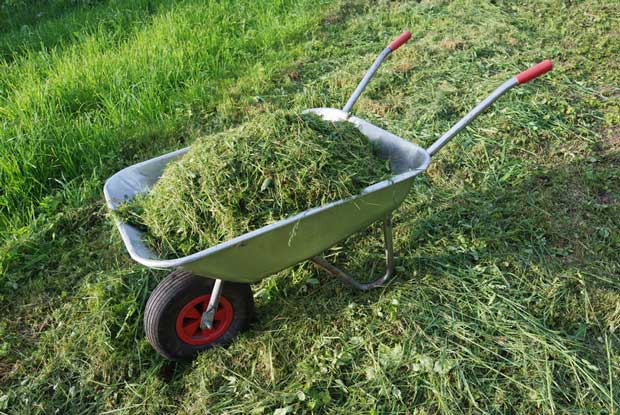3 organic fertilisers to try

Two of the best additions for your soil are byproducts of everyday activities, and one of them you can make in your sleep.
Words: Nadene Hall
When you think of a fertiliser, you may think of commercial pellets, or liquid fishy manures. The useful thing about these types of fertilisers, even organic ones, is that the company’s concerned have helpfully worked out the NPK ratio (nitrogen, phosphorous, potassium).
The organic gardener needs to take a different path. While quick fixes are enticing, it is the addition of enriching additions to soil that may take months or even years to have an effect that are the basis of being truly organic.
FREE FERTILISER 1: LAWN CLIPPINGS
Good old lawn clippings break down so fast, you’re getting nutrients from day one. Not only that, but unlike commercial fertilizers, clippings also prevent weeds and conserve soil moisture.
Soil scientists at Woods End Laboratory in Maine, USA are experts in composting processes and have the following tips:
– fresh clippings from spring grass will have a nitrogen content of around 5%; later in summer it falls to around 2%.
– to provide a soil with a season worth of nutrients, you only need a 2.5-5cm layer of fresh clippings, which can be dug into soil, or left on top to rot.
Using grass clippings over the course of several seasons will see the nitrogen-holding capacity of the organic matter in the soil increase by several percent per year.
FREE FERTILISER 2: COMPOST
There is labour involved in making compost, so it’s not quite as “free” as other additions. However, it is an excellent fertiliser, even though gardeners may not think of it in this way. A compost made of a mix of bulky ingredients will contain 1% nitrogen, composted manure about 3%. However, compost’s advantage over commercial fertiliser is the soil beneficials, bacteria and fungi it will introduce to soil, helping plant roots to manufacture more nitrogen, phosphorous and other nutrients, plus it helps the soil to hold moisture.
FREE FERTILISER 3: URINE
Yes, your urine. Take a big drink before you go to bed and by morning you’ll have produced a sterile, nitrogen-rich addition to your garden. Not only that, you’ll have saved 10 litres of water by not flushing.
Urine also has a carbon-nitrogen ration of 0.8:1, making it an excellent compost activator if you have a carbon-rich compost.
To use urine as a liquid fertiliser you’ll need to water it down, one part urine to 10-15 parts water; urine tends to be acidic and salty. In your vegetable garden, use it on growing plants and plants that like more nitrogen; leafy vegetables and corn will appreciate it. Don’t use it on tomatoes and fruiting vegetables when they are flowering or growing fruit as the extra nitrogen encourages leaves, not crops.
• Only use fresh urine – if it’s starting to smell, it’s converting nitrogen to ammonia, so your nitrogen levels are falling.
• Don’t use urine if you have a urinary tract infection, otherwise it’s a sterile liquid so you can’t get sick from using it.
• Don’t add urine to your worm farm (worms don’t like it) but it’s an excellent addition to compost for its nitrogen, phosphorous and trace elements, and it’s excellent for heating up the pile
Love this story? Subscribe now!
 This article first appeared in NZ Lifestyle Block Magazine.
This article first appeared in NZ Lifestyle Block Magazine.

